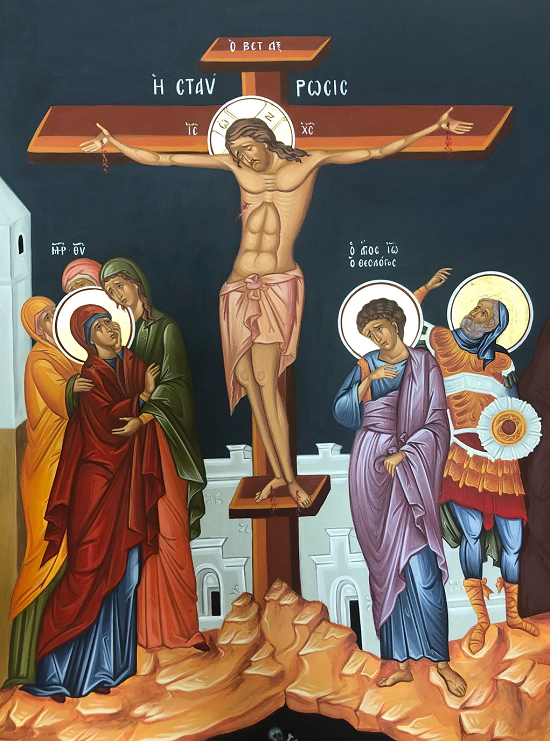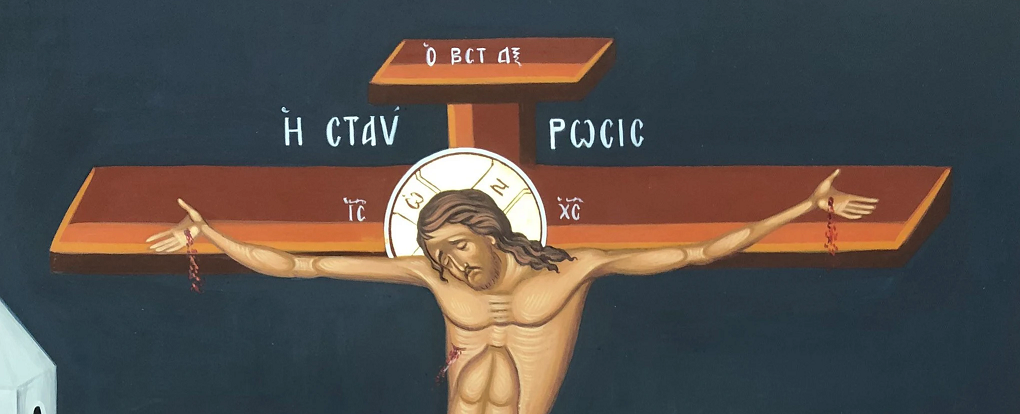Service as Eucharist
Good Friday Scripture Readings

Yesterday, in our Maundy Thursday liturgy, I made the point that, in deciding the Scripture readings for these first two days of the Sacred Triduum, the Church turned to the Gospel of John. I mentioned that John had diverted from the chronology of the other evangelists who presented Jesus’s Last Supper with his disciples as a Passover meal. John, in effect, moved the Passover one day later. What can we learn from this discrepancy? We understand that John’s gospel was the last to be written, so we can be confident that John knew the works of the other three evangelists. His alteration, then, had to have been deliberate. We also know that John’s writing was the most reflective and sophisticated of the gospels and thus it’s important to understand his reasoning. Why did John do something so radical?
Keep in mind that, in the Jewish faith, the day begins at sundown. Following John’s chronology, the day beginning at sundown on Thursday and ending at sundown on Friday—the day of Jesus’s Last Supper, arrest, trial, and condemnation—a day known as Preparation Day—was the day before the Passover feast. Jesus prepared his disciples for the celebration of the Passover, as well as for his imminent suffering and death, by doing the servant’s job of washing their feet before breaking bread with them. Giving Judas a morsel of that meal set into motion all the events of that day. We read that the following day—starting at sundown on Friday—was not only the Sabbath, but also a solemn feast—the Passover.
Jesus was tried and condemned to death on the Preparation Day. As the afternoon of that day wore on, Jewish officials went to Pilate to have the legs of those crucified broken. Why? The answer lies in the nature of crucifixion. It was accomplished by driving nails through the wrists of the condemned into a crossbeam that was then lifted atop a vertical pillar driven into the ground for that purpose. A single nail was then driven through the feet and into the vertical support with the person’s knees bent. When the crucified relaxed and hung by the nails in their wrists, it not only put pressure on those wounds, but it also quickly caused cramping of the chest muscles that made it impossible to exhale. To relieve the pressure, they would have to stand upright using the nail in their feet. They could only sustain that pain for a short while and would have to relax again. Therefore, the movement continued up and down. Crucifixion was not a quick execution. The crucified could last in that condition for several days until they finally collapsed and succumbed to asphyxiation. The Torah forbade executions on the Sabbath, so, by breaking the condemneds’ legs, death would follow quickly before sundown in accordance with the law.
But they did not break Jesus’s legs, and here’s where John’s description of the crucifixion is particularly significant. Jesus chose the moment of his own death. Saying, “It is finished,” he bowed his head and gave up fighting. He breathed his last and relaxed into the inevitable. At that point, John interrupts his narrative with an editorial comment. He says, “The eyewitness has testified and his testimony is true; he knows that he is speaking the truth, so that you may also come to believe.” Why is this testimony so critical? The answer is hidden in the quotation John provides for us from the Book of Exodus: “Not a bone of it will be broken.”
This passage refers to the Passover lamb, slaughtered in sacrifice in the temple on the Preparation Day. In John’s chronology, at the moment of Jesus’s death on Calvary, across the valley on the Temple Mount, the Passover lambs were being offered in sacrifice. The whole purpose of John’s shifting the timeline was to bring home that parallel. The Passover lamb, whose blood on their lintels let the angel of death pass over them was just a prefiguring of the blood of the Christ—the Messiah, the Lamb of God—who accomplishes the same for those who believe and trust in him. The angel of death passes over. Yet, although the Israelites who’d escaped the angel of death and the death of their firstborn sons had eventually themselves died, now, the Lamb of God who gave himself on the cross has destroyed death forever.
The message that the Church has spotlighted for us these past two days is clear. From the perspective of John the evangelist, Christ’s washing his disciples’ feet and his giving himself on the cross as the lamb of sacrifice stands as the paradigm of what it means to be a follower of Christ. To follow where Jesus went, through death to resurrection, we must do what Jesus did. He gave himself up completely in service to all—friend or foe, worthy or unworthy. That’s the essence of Christianity: self-sacrifice for the sake of others that brings new life. That’s what we celebrate here today: we focus our attention not only on Jesus and what he did, but on ourselves and how we are called to follow him, offering ourselves in service to others as he did so that we can rise again … as he did.
Get articles from H. Les Brown delivered to your email inbox.
